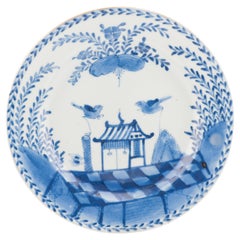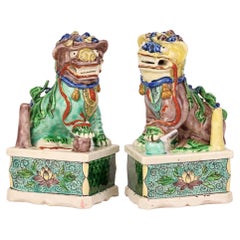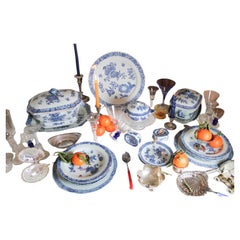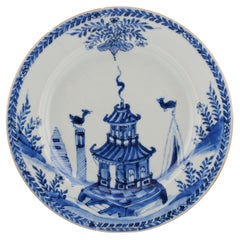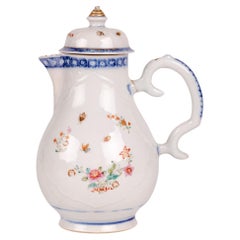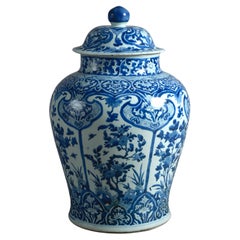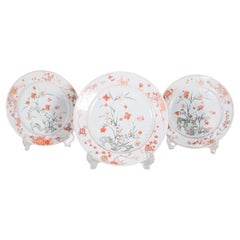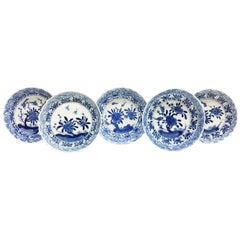Kangxi Ceramics
Antique Late 17th Century Chinese Ceramics
Porcelain
Antique 18th Century Chinese Qing Ceramics
Porcelain
Antique 17th Century Chinese Qing Ceramics
Porcelain
Antique 18th Century Chinese Qing Ceramics
Porcelain
Antique 18th Century Chinese Qing Ceramics
Porcelain
Antique 1660s Chinese Ceramics
Porcelain
Antique 17th Century Ceramics
Porcelain
Antique Late 18th Century Chinese Rococo Porcelain
Porcelain
Antique 18th Century Chinese Ceramics
Porcelain
Antique Early 18th Century Chinese Chinese Export Ceramics
Porcelain
Antique 17th Century Chinese Qing Ceramics
Porcelain
Antique 17th Century Chinese Qing Ceramics
Porcelain
Antique 17th Century Chinese Qing Ceramics
Porcelain
Antique 17th Century Chinese Qing Ceramics
Porcelain
Antique 18th Century Chinese Regency Ceramics
Porcelain
Antique 18th Century Chinese Qing Ceramics
Porcelain
20th Century Chinese Chinese Export Ceramics
Porcelain
Antique 18th Century Chinese Chinese Export Ceramics
Porcelain
Antique 18th Century Chinese Qing Ceramics
Pottery
Antique Late 19th Century Chinese Qing Ceramics
Celadon
Antique 18th Century Chinese Qing Ceramics
Porcelain
Antique 18th Century Chinese Ceramics
Porcelain
Antique 1690s Chinese Qing Ceramics
Porcelain
Antique 18th Century Chinese Ceramics
Porcelain
Antique 17th Century Edo Ceramics
Porcelain
Antique 17th Century Chinese Qing Ceramics
Porcelain
Antique 18th Century Chinese Qing Ceramics
Porcelain
Antique 17th Century Edo Ceramics
Porcelain
Antique 17th Century Chinese Qing Ceramics
Porcelain
Antique Early 18th Century Chinese Chinese Export Porcelain
Porcelain
Antique 17th Century Chinese Qing Ceramics
Porcelain
Antique 17th Century Chinese Qing Ceramics
Porcelain
Antique 18th Century Chinese Qing Ceramics
Porcelain
Antique 17th Century Chinese Qing Ceramics
Porcelain
Antique 18th Century Chinese Ceramics
Porcelain
Antique 17th Century Chinese Qing Ceramics
Porcelain
Antique Early 18th Century Chinese Chinese Export Ceramics
Porcelain
Antique 17th Century Chinese Ceramics
Porcelain
Antique 1880s Chinese Ceramics
Antique Early 18th Century Chinese Chinese Export Ceramics
Porcelain
Antique Early 18th Century Chinese Qing Ceramics
Porcelain
Antique 1690s Vietnamese Qing Ceramics
Ceramic
Antique Early 1700s Chinese Ceramics
Enamel
Antique Early 18th Century Chinese Qing Ceramics
Porcelain
Antique 17th Century Chinese Qing Ceramics
Porcelain
Antique 17th Century Chinese Qing Ceramics
Porcelain
Antique 17th Century Chinese Qing Ceramics
Porcelain
Antique 17th Century Chinese Qing Ceramics
Porcelain
Antique 17th Century Chinese Qing Ceramics
Porcelain
Antique 17th Century Chinese Qing Ceramics
Porcelain
Antique 17th Century Chinese Qing Ceramics
Porcelain
Antique 17th Century Chinese Qing Ceramics
Porcelain
Antique 17th Century Chinese Qing Ceramics
Porcelain
Antique 17th Century Chinese Qing Ceramics
Porcelain
Antique 17th Century Chinese Qing Ceramics
Porcelain
Antique Early 18th Century Chinese Chinese Export Ceramics
Porcelain
Antique 17th Century Chinese Qing Ceramics
Porcelain
Antique 17th Century Chinese Qing Ceramics
Porcelain
Antique 17th Century Chinese Qing Ceramics
Porcelain
Antique 17th Century Chinese Qing Ceramics
Porcelain
- 1
Kangxi Ceramics For Sale on 1stDibs
How Much are Kangxi Ceramics?
- 1stDibs ExpertApril 5, 2022Chinese Kangxi porcelain was popular because of its particular blue colorings. The blue was made using cobalt ore which was imported from Persia. As cobalt ore was a scarce ingredient, the rarity made the porcelain items highly sought after. Shop a collection of Chinese Kangxi porcelain from some of the world’s top sellers on 1stDibs.
- 1stDibs ExpertApril 5, 2022The Kangxi mark appears on porcelain created in China during the Kangxi period, 1662-1722. There are two types of Kangxi marks: a reign mark and a potter’s personal mark. Reign marks are six-character marks in two vertical lines with a double circle around them. Other marks vary and indicate a potter’s personal mark. They could be a picture, a blank circle or a character. Browse a variety of authenticated Kangxi porcelain on 1stDibs.
 Lotus GallerySeptember 15, 2020
Lotus GallerySeptember 15, 2020Chinese porcelain can usually be dated by form and decoration. However, copies and forgeries abound, so you should have an expert such as an appraiser, reputable dealer or auction house, or museum examine your porcelain to accurately date it.
Read More
Chicago’s Pagoda Red Has a Spirited Mix of Asian Antiques and Bold New Art
For 25 years, gallerist Betsy Nathan has leveraged her keen eye and key connections to bring a unique selection of rare finds to the market.
In L.A., Gallerist JF Chen Has Long Championed Eclectic Blue-Chip Design
Now working alongside his daughter Bianca, dealer Joel Chen has presented a most covetable array of antiques, art and contemporary creations for more than 40 years.
12 Calming Spaces Inspired by Japanese Design
From cherry-blossom-adorned walls paired with glamorous lighting to wood-paneled ceilings above checkerboard-patterned chairs, these 12 spaces seamlessly blend Eastern and Western aesthetics.
Rodrigo Rivero Lake’s Mexico City Showroom Is a Museum-Worthy Trove of Spanish Colonial and Asian Antiques
The dealer and curator has spent the past 50 years amassing a collection of exceptional art, furniture and architectural elements that trace the cultural influence of the Spanish empire from Europe to the Americas and beyond.
16 Refined Asian-Inspired Interiors
These spaces exemplify how Eastern elements elevate a home's decor.

